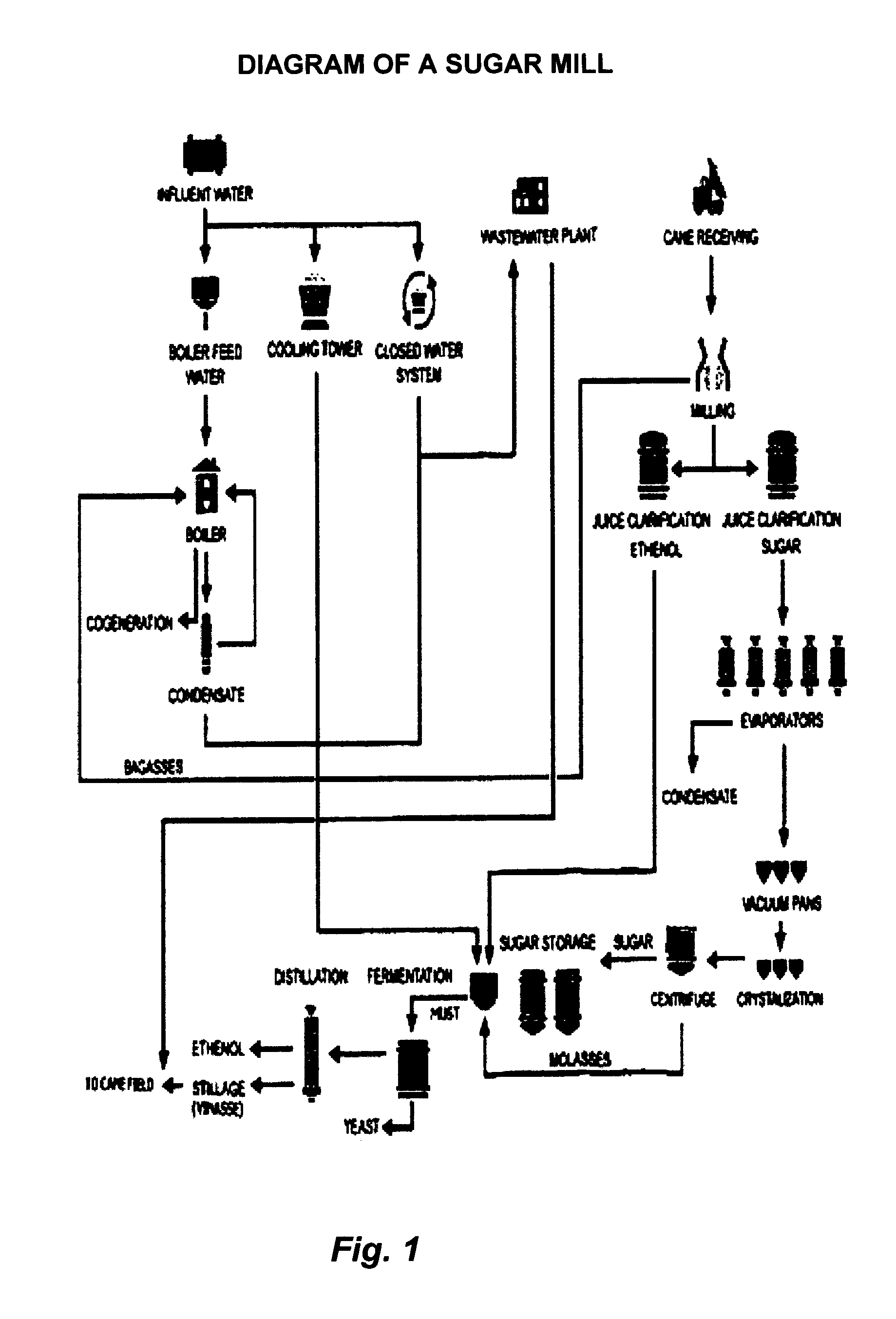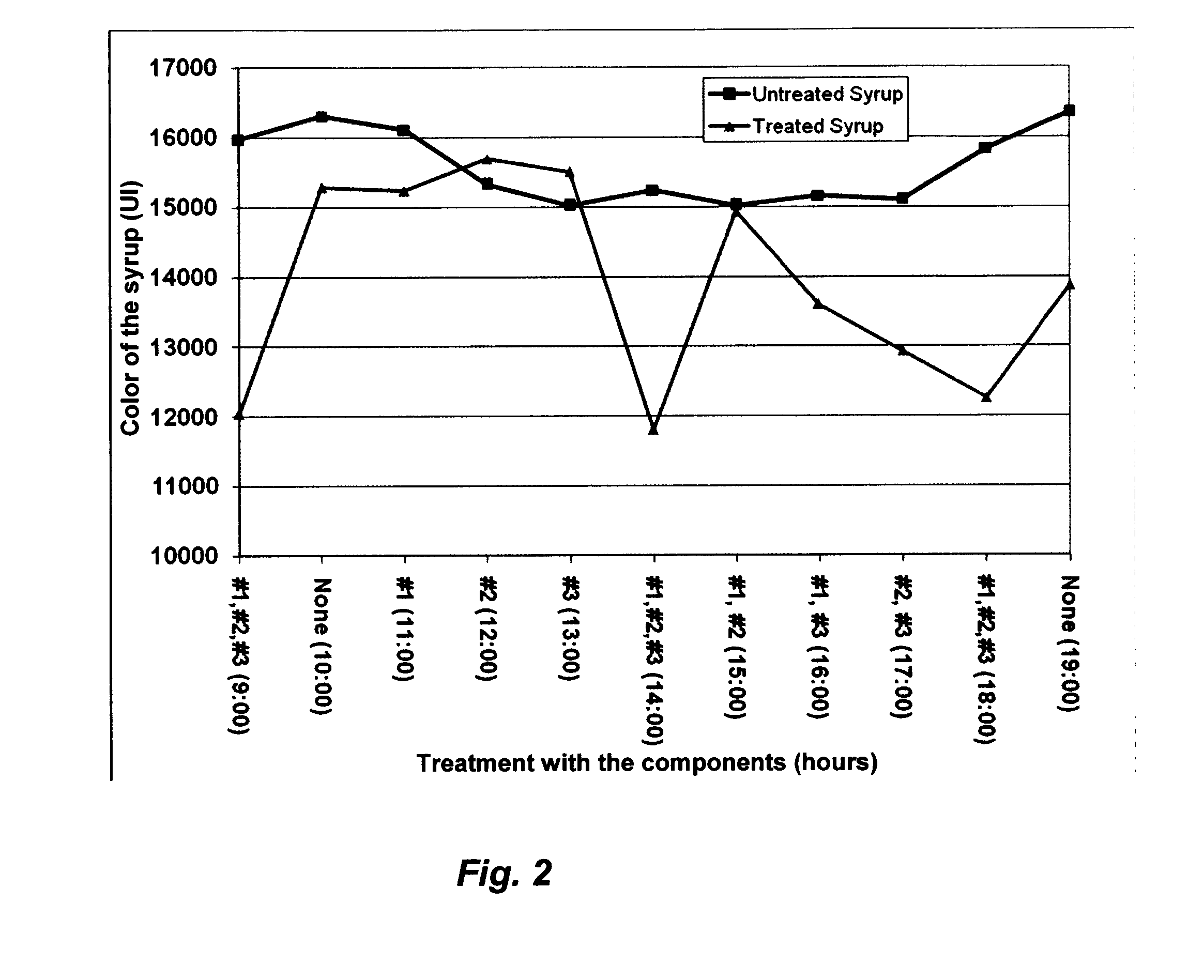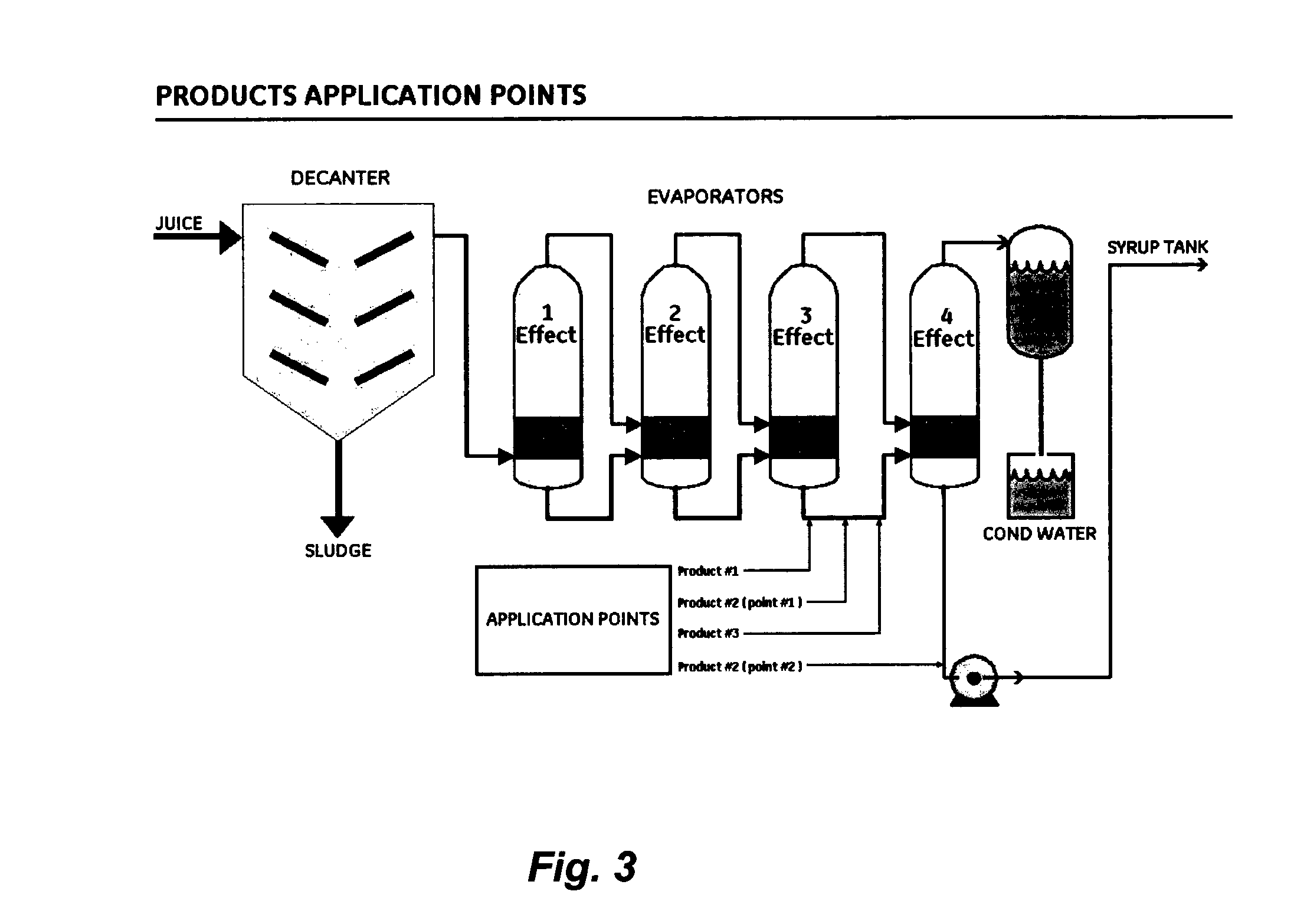Method and composition for reducing the color of sugar
- Summary
- Abstract
- Description
- Claims
- Application Information
AI Technical Summary
Benefits of technology
Problems solved by technology
Method used
Image
Examples
example 1
Effect of the Variation of the Type of Component 3 on Color Reduction Efficiency
[0116]Example 1 verifies the possibility of using various types of chelating agents as Component 3. This way, syrup samples taken from the input point of the last evaporator (i.e., samples were taken from syrup being transported to the last evaporator) were collected and tested. In this particular case, there were four evaporators, so the samples were taken from the syrup being transported between the third and fourth evaporators in a sugar processing facility. While the testing of the present invention on actual plant runs (i.e., adding Components 1, 2, and / or 3 to the plant) is believed to be more representative than adding Components 1, 2, and / or 3 to samples of syrup having been removed from the plant, the present testing of lab samples shows that different chelating agents behaved similarly in the lab samples and are therefore expected to also behave similarly when added to the plant. The untreated ...
example 2
Analysis of the Color Reduction Obtained with the Use of Components 1, 2 and 3 Compared to the Use of Each of the Components Separately or Together
[0117]In order to verify the need for the presence of the three Components in the process of the present invention, a series of tests were conducted using different combinations of Components 1, 2, and / or 3.
[0118]A traditional sugar production process was utilized, and the use of Components 1, 2, and / or 3 was at the input point of the last evaporator (in this case, the fourth evaporator). In this process, three pumps control the addition of Components 1, 2 and 3. In order to observe the effect of adding a second dose of Component 2 to the process, a fourth pump controlled the addition of Component 2 after the outlet of the last evaporator. Component 1 was added at a 50 ppm concentration relative to the syrup into which it was added (input of last evaporator). Component 2 was added at a 50 ppm concentration at application point #1 (input o...
example 3
Analysis of the Efficiency of the Present Invention for Color Reduction at Different Stages of the Sugar Production Process
[0122]In order to verify the applicability of the technology of the present invention during different stages of the traditional sugar production process, the Applicant applied the invention to various samples taken from different locations along the sugar production process.
[0123]Consequently, tests were conducted with the raw juice, the decanted juice, the syrup produced by each of the four evaporators used at the mill in question, the rich mother liquor and the poor mother liquor, as well as the VHP liquor and the molasses. Various samples of the above were taken from various locations of the sugar production process, and then were subjected to the procedure below.
[0124]The procedure was the following (exemplified only at one of the points, although the same procedure was used at all the others): 5% solutions in mass of Components 1, 2 and 3 were prepared thr...
PUM
 Login to View More
Login to View More Abstract
Description
Claims
Application Information
 Login to View More
Login to View More - R&D
- Intellectual Property
- Life Sciences
- Materials
- Tech Scout
- Unparalleled Data Quality
- Higher Quality Content
- 60% Fewer Hallucinations
Browse by: Latest US Patents, China's latest patents, Technical Efficacy Thesaurus, Application Domain, Technology Topic, Popular Technical Reports.
© 2025 PatSnap. All rights reserved.Legal|Privacy policy|Modern Slavery Act Transparency Statement|Sitemap|About US| Contact US: help@patsnap.com



